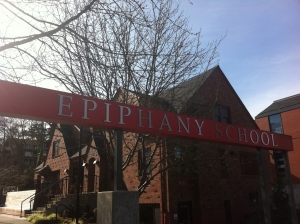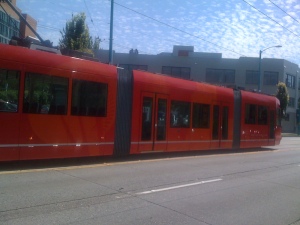The National Independent School Annual Conference kicks off tomorrow at the Washington State Convention Center here in Seattle. Having been fortunate enough to attend a few conferences in other cities, I know that sight seeing isn’t really on the agenda as each day is completely filled. By the time each day is over, most sights are closed or one is usually exhausted from the conference itself. Nonetheless, I’m going to try and give a few tips for those visiting our splendid city this week. Here are my top 5 things to do this week while you’re here.
5. Have dinner with colleagues in the Westlake/South Lake Union District. The theme for the conference is innovation, and you couldn’t be in a better city for it. Boeing, Microsoft, Amazon, Starbucks, and Costco are just a few of the innovative companies around here. Amazon has embraced the concept of an urban campus, and what used to be a rarely visited part of town is developing into quite a great spot – and that doesn’t include the 3 million square feet Amazon plans to build in the near future. It’s a short cab ride from downtown or you can ride the South Lake Union Trolley (only tourists do, so go ahead). Here are a few places.
- Flying Fish (Seafood)
- Serious Pie (Seriously good pizza)
- Cuoco (Great Northern Italian)
- Bravehorse Tavern (Gastro Pub)
- Lunchbox Labratory (I haven’t been here, but I hear if you’re into large portions, their plates are monumental)
- There are many more restaurants to explore and enjoy.
4. Visit the Seattle Art Museum on Thursday night for free.
Every first Thursday of the month, Seattle has an art walk. I wouldn’t normally recommend walking at night in the Pioneer Square area, but all the galleries are open to the public until 8pm and its very safe on First Thursdays. You can check out this website for maps and galleries. In addition to the galleries, the Seattle Art Museum is free on the first Thursday of the month. It doesn’t include the current Gaugin exhibit, but there’s plenty of great art throughout the rest of the museum.
3. Visit the Seattle Public Library
Open til 8pm on Wednesday and Thursday, the central branch of the Seattle Public  Library is quite an innovation in design and architecture. You might want to watch this TED talk first before your visit.
Library is quite an innovation in design and architecture. You might want to watch this TED talk first before your visit.
2. Come share what you’ve learned at edcampIS on Saturday, March 3.
Unwind after the big conference, and instead of listening to big keynotes, listen to other educators and share with each other what you’ve learned. Currently we have over 80 registrants from 16 states, DC, and Canada. To learn more visit edcampis. Also learn more about unconferences by reading an interview of one of the co-organizers, Liz Davis.

1. Go to the Pike Place Market BEFORE the conference.
That is when the market is most alive with all the deliveries of fish, produce, and other colorful sights. Make sure to bring a camera!
I’m afraid if you haven’t been to Seattle before, it will live up to its reputation of being damp and cold. Just to prove that isn’t the case, I took a picture at school yesterday while the sun was shining. Even in the rain, I love this city, and I hope all visitors have a great conference.





